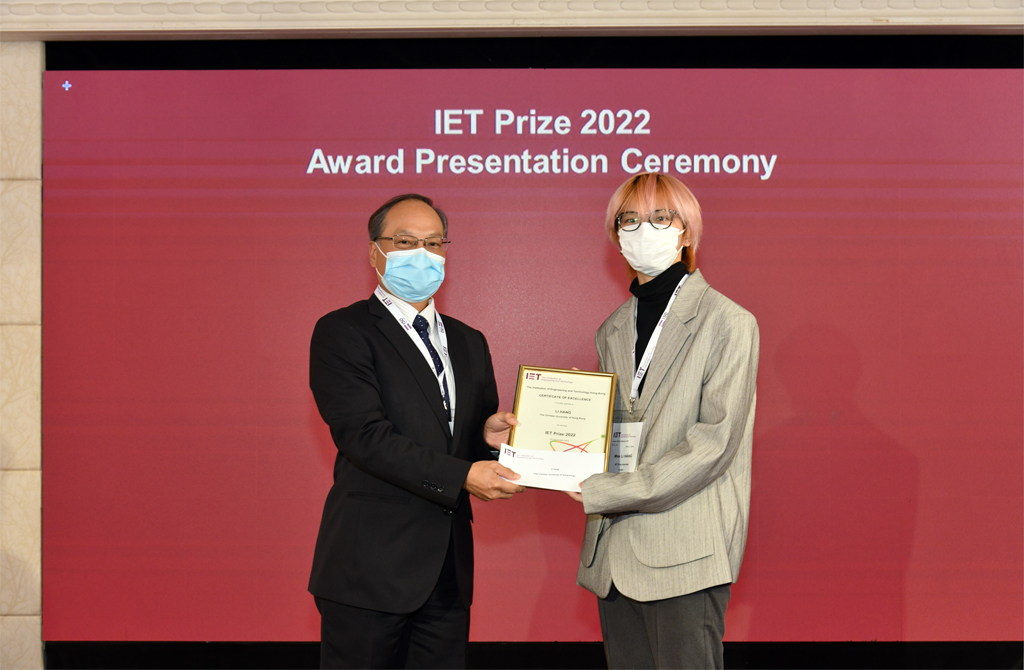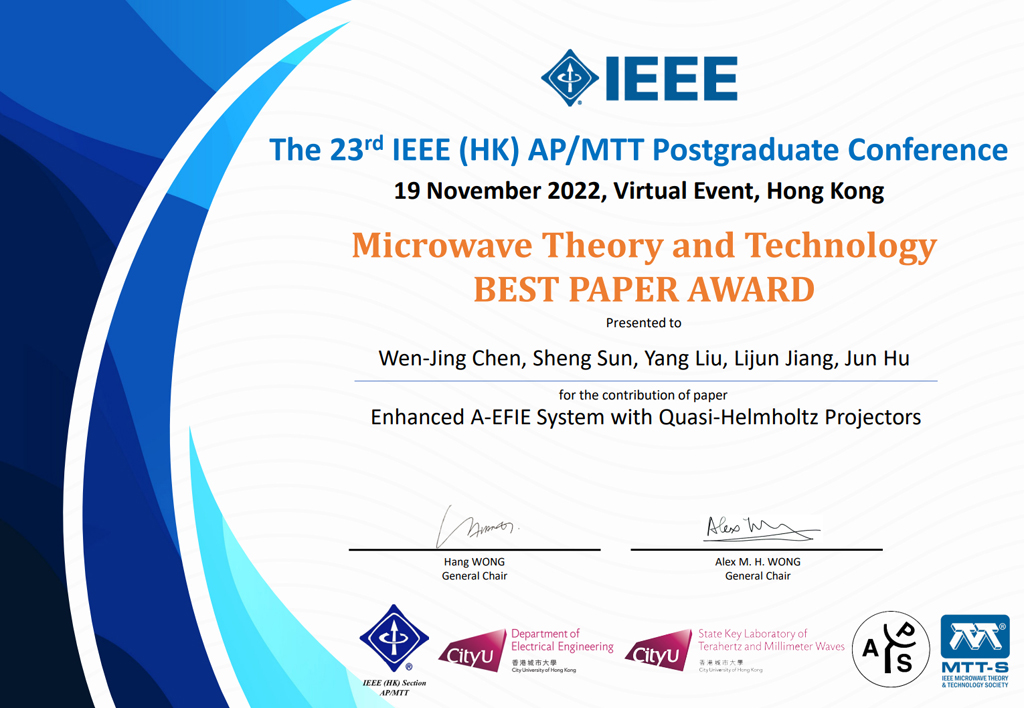Homepage
Home
Miss LI, Hang, an outstanding EE year-2 undergraduate student, is awarded the IET Prize 2022 by The Institution of Engineering and Technology Hong Kong.
The IET Prize delivers the IET’s vision by underpinning our mission: to inspire, inform and influence the global engineering community, supporting technology innovation to meet the needs of society. The awardee will be granted a certificate and a cash prize. To further promote and inspire the next generation the professional development opportunities in the field of engineering and technology, the awardee will be offered a complimentary student membership of the IET for one year as well.
Congratulations!

Prof. Steven Gao has been appointed as the Editor in Chief of IEEE Antennas and Wireless Propagation Letters (AWPL)
Congratulations!
Prof. Steven Gao (the successor of Prof. Christophe Fumeaux) is honored to be the Editor in Chief of AWPL. AWPL is one of the most prestigious Journals in the field of antennas, radio propagation and electromagnetics, and also one of the fastest Journals of IEEE.
The website of AWPL: http://awpl.ee.cuhk.edu.hk
Prof. Chaoran Huang awarded USD 100,000 applied research grant from the Optica Foundation (20th Anniversary Challenge).
The pioneering work, which focuses on integrated photonic neuromorphic processor enabled intelligent, energy-efficient signal processing for the next-generation communication systems, will be featured throughout the coming year in Optica Foundation efforts.
Global internet traffic continues to grow at exponential rates and, to keep up with its scale, optical communications systems will need to provide 10 times more communication capacity, while the signal processors that serve as the foundation for these systems must reduce energy per bit tenfold. This need for both processing capability and energy efficiency creates challenges for today’s systems, but Professor Huang’s new research may have the answer: an integrated photonic neuromorphic processor.
Professor Huang’s design employs the strengths of the intrinsic properties of photonics, deep learning architectures and integrated photonic technologies to create a photonic processor that is anticipated to be 10 times more energy efficient and reduce processing latency by 1,000 times. In addition, employing silicon photonics as the basis for the photonic processor makes it more cost-effective and accessible for wider industry exploration.
Professor Huang said, “A photonic neural network is a hardware realisation of a deep learning model and will allow us to use photonic devices and shifts to process optical communication signals faster and with more power efficiency. We plan to build a photonic processor that can provide a sustainable processing speed and energy efficiency to tackle these challenges. This work can have an immediate and transformative impact on the important application of optical communication.”
Building on existing research, Professor Huang expects to create a small prototype that offers a proof-of-concept demonstration of the photonic processor within six months. She will identify a way to engineer a photonic neuron that can provide a speed of 50GHz. She will also incorporate high-speed integrated photonic circuits and electronic control circuits to increase bandwidth and efficiency.
More information on Professor Huang’s research is available at Research Executive Summary and her research website.
Congratulations!
Prof. Lijun Jiang collaboration with UESTC won the Best Paper Award at the Postgraduate Conference
Prof. Lijun Jiang collaboration with UESTC received the Microwave Theory and Technology Best Paper Award at the 23rd IEEE (HK) AP/MTT Postgraduate Conference held on Nov. 19th online. The title of the work is "Enhanced A-EFIE System with Quasi-Helmholtz Projectors".
Congratulations!

Subcategories
2025 Article Count: 5
2024 Article Count: 14
2023 Article Count: 17
2022 Article Count: 19
2015 Article Count: 12
2014 Article Count: 16
2013 Article Count: 20
2012 Article Count: 14
2011 Article Count: 10
2010 Article Count: 12
2009 Article Count: 20
2008 Article Count: 25
2007 Article Count: 2
2020 Article Count: 10
2021 Article Count: 15
2019 Article Count: 7
2018 Article Count: 8
2017 Article Count: 14
2016 Article Count: 20



